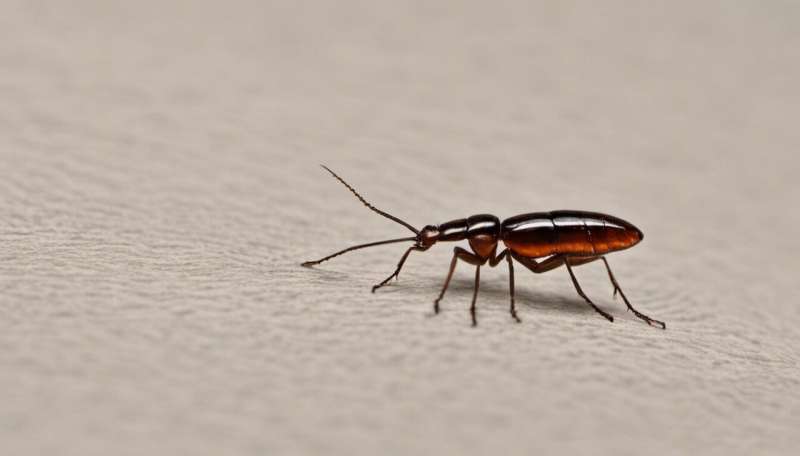Bugs make ideal crime scene clues

It might seem like an idea out of CSI: Las Vegas, but local forensic researchers have come up with a way of using blowflies to determine if someone has died via nicotine poisoning.
Inexpensive, easy to acquire and not always on the radar of coroners, nicotine is a highly toxic substance that can lead to nausea, vomiting, cardiovascular collapse and respiratory failure.
A fatal dose is estimated at 30-60mg for adults—about the size of a regular medicine capsule—and 10mg for children.
While smokers might laugh at the suggestion their regular puff could poison them, an increase in e-cigarettes, vaporisers and aids to stop smoking have increased the dangers.
"When you smoke, you don't get much nicotine, but if a person were to drink a full container from an e-cigarette, they would die," Murdoch University forensic science lecturer and researcher Dr Paola Magni says.
"Many of these are flavoured to taste like cotton candy or bubble gum, so it is not hard to imagine a child drinking one of these, because of their taste.
"And we've had cases of kids putting nicotine patches onto their skin, thinking they are stickers or band-aids.
"There is a big possibility of death if you don't intervene."
While e-cigarettes are still illegal for sale in WA, many people have turned to the internet to buy them, falsely believing them to be a safer smoking option.
In fact, half-a-teaspoon of liquid nicotine is enough to kill a child and even skin contact with the concentrated substance can cause dizziness, a spike in blood pressure and seizures.
To detect nicotine poisoning as a cause of death, Dr Magni and her collaborators in Boston Medical School and University of Torino (Italy) designed and tested a method that uses gas chromatography-mass spectrometry and the blowfly Calliphora vomitoria L.
The method includes two levels of detection: identifying nicotine in bugs and documenting how the toxin affects body structure in fly offspring.
They found that analysing one gram of blowflies could provide evidence of poisoning, in the form of nicotine or its converted form, the metabolite cotinine.
High levels of nicotine also resulted in significant shortening of the flies' larvae and pupae size, providing evidence of developmental change.
"When a body is decomposed, traditional forms of forensic toxicological analysis become unreliable," Dr Magni says.
"But you will still have bugs, which because they have ingested the flesh and any toxic substance in it, provide information about recent events, making them highly reliable."
Provided by Science Network WA
This article first appeared on ScienceNetwork Western Australia a science news website based at Scitech.

















